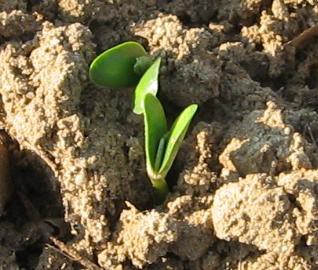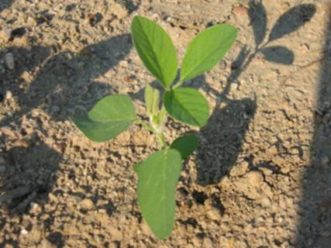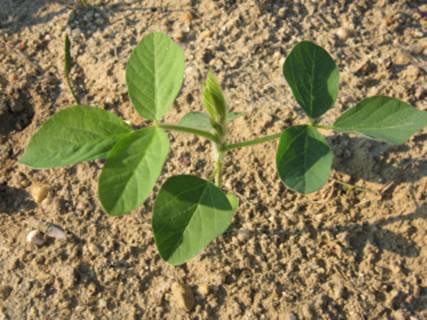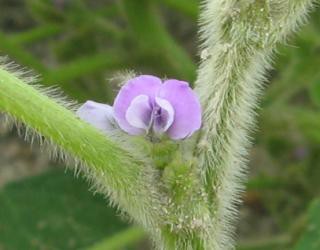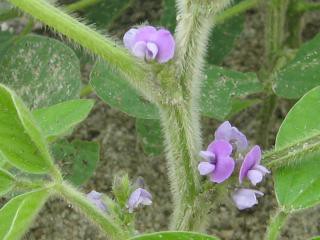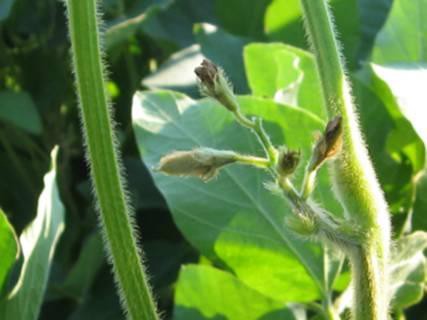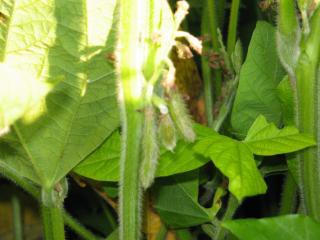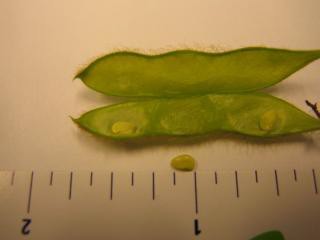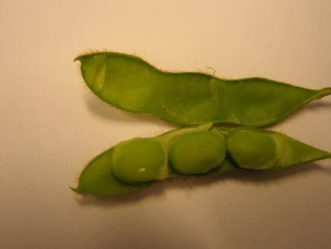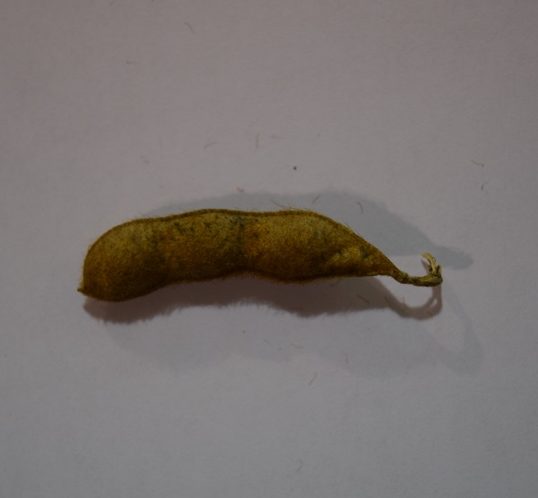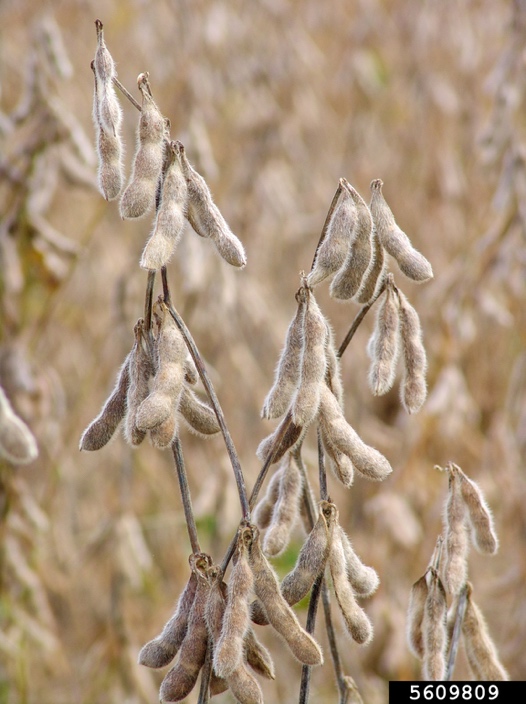Identifying soybean growth stages is essential for proper crop management of pests, irrigation, and fertility. This guide will help growers, consultants, extension, and research personnel correctly identify soybean growth stages in both determinate and indeterminate soybean varieties.
Generally, soybean growth and development can be divided into vegetative (V) and reproductive (R) growth stages. However, soybean can be broken into two different growth habits: indeterminate and determinate. Indeterminate cultivars continue vegetative growth even after reproductive growth has been initiated and are classified as maturity groups (MG) 000–IV. In contrast, determinate cultivars cease vegetative growth once reproductive growth begins and are classified as MGs V–X.
Each growth stage starts when at least 50% of plants in the field or area are at that stage. Vegetative growth stages start with soybean emergence, and reproductive growth stages begin with the first flower for all soybean cultivars.
Vegetative (V) Growth Stages
Vegetative growth stages of soybean progress through four or more stages of maturity prior to initiation of reproductive growth stages. Pictures of each stage and a description of that stage are presented below.
VE Stage
The soybean’s vegetative growth stages begin with the VE stage of seedling emergence (figure 1). Prior to germination, soybean seed absorbs water equal to approximately 50% of its weight. Hypocotyl elongation brings the cotyledons out of the soil, starting the soybean plant emergence process.
VC Stage
After emergence, unifoliolate leaves on the first node unroll in addition to cotyledons and start the VC stage (figure 2).
V1, V2, V3 to V(n) Stages
Stages following VC are designated numerically from V1, V2, V3, through V(n). For example, the V1 stage starts with one fully developed trifoliolate leaf on the second node (figure 3). The V2 stage occurs when one additional trifoliate leaf is fully developed on the third node (figure 4). The (n) represents the number of the last fully developed trifoliolate leaf. A fully developed trifoliolate leaf has unrolled or unfolded leaflets.
Reproductive (R) Growth Stages
The reproductive stages of soybean progress through eight growth stages before reaching physiological maturity. Pictures of each stage and a description of that stage are presented below.
R1 and R2 Stages
In both determinate and indeterminate soybean, the reproductive stages begin with the R1 (beginning bloom) stage when at least one open flower is present on the main stem (figure 5). The R2 (full bloom) stage begins when an open flower is present at any of the top two nodes with a fully developed trifoliate (figure 6).
R3 and R4 Stages
The R3 (beginning pod) stage begins when pods are 3/16-inch long at one of the top four nodes with a fully expanded trifoliate (figure 7). The R4 (full pod) stage begins when pods are 3/4-inch long at one of the top four nodes and with the presence of a fully expanded trifoliate (figure 8).
R5 and R6 Stages
The R5 (beginning seed) stage begins when seeds are 1/8-inch long on one of the top four nodes with a fully expanded trifoliate (figure 9). The R6 (full seed) stage begins when pods are filled with a green seed on one of the top four nodes with the presence of a fully expanded trifoliate (figure 10).
R7 and R8 Stages
The R7 (beginning maturity) stage begins when one pod per plant has reached mature color, normally brown or tan (figure 11). The R8 (full maturity) stage begins when 95% of the pods have reached their mature color (figure 12).
References Cited
- Fehr WR, Caviness CE, Burmood DT, Pennington JS. Stage of development descriptions for soybeans, Glycine max (L.) Merrill. Crop Science. 1971. 11:929–931.
- Licht M. Soybean growth and development. Ames (IA): Iowa State University Extension and Outreach; 2014. PM 1945.
Additional Resources
Clemson Cooperative Extension Agronomic Crops Program Team Soybean Production Website
2021 South Carolina Soybean Production Guide, Clemson Cooperative Extension
Talley C. Soybean Tissue Sampling. Clemson (SC): Clemson Cooperative Extension, Land-Grant Press by Clemson Extension; 2020. LGP 1100.

